Lost in Petra, Jordan
- Jennifer Diaz

- Mar 24, 2019
- 7 min read



We began our day once again with no wake-up call, but thankfully both of our alarms went off as planned. I did not want to be late, we had an exciting day in Jordan planned. I’m not a big fan of organized tours, but our small group was great and I loved our tour! With the exception of the Aussie’s who stayed to themselves, and the Doctor from Canada, the rest of us were all Americans.




We were all experienced travelers with the exception of four adventurous senior ladies from Arizona and California, for two of them it was their first trip out of the country and to top it off one of them decided to get baptized in the Jordan River! Two of the ladies have been best friends since the age of five and were living their lives to the fullest. The other Americans were two couples from New York. One an elderly professor from NYU and his wife, and the other a young Newlywed couple. It was fun to discover that they spent their honeymoon hiking Machu Picchu with the same adventure tour company that we used.




After breakfast we left Amman and drove to Petra via the King’s Highway. The drive was scenic as we crossed deep Wadis, passed through olive groves and remote villages. Our first stop for the day was at Madaba and St. George’s Greek Orthodox Church, a 19th-century church which houses the oldest mosaic map of Palestine in existence. In 1884 the builders of the church discovered remnants of a 6th century Byzantine church.



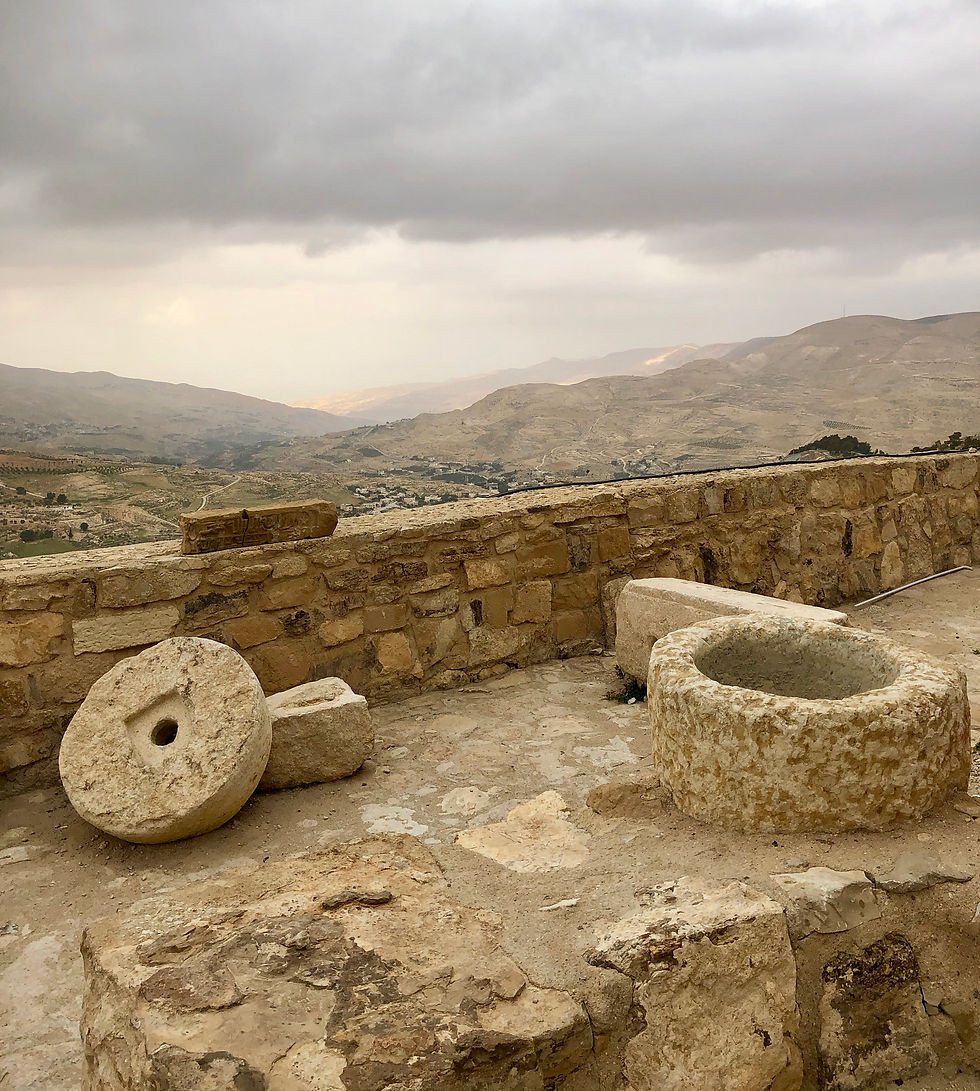
Among the ruins they found an extraordinary mosaic map on the floor which describes the layout of the Holy Land which has provided many historical insights into the spread of Christianity in the region. The map is vibrant and colorful and is made with over 2 million mosaic pieces depicting many biblical sites.




We then drove a short distance to the shrine of Moses. We made our way up Mt. Nebo, which provides spectacular views of the Holy Land, it is known as the burial place of the prophet Moses. This is the place where God granted Moses a view of the Promised Land but didn’t allow him to actually go there. The views are breathtaking.



After exploring the shrine, we again crossed a few deep Wadis, including the impressive Wadi al-Mujib, where the road winds through olive groves before rising up the side of a spectacular 1-kilometer deep canyon.
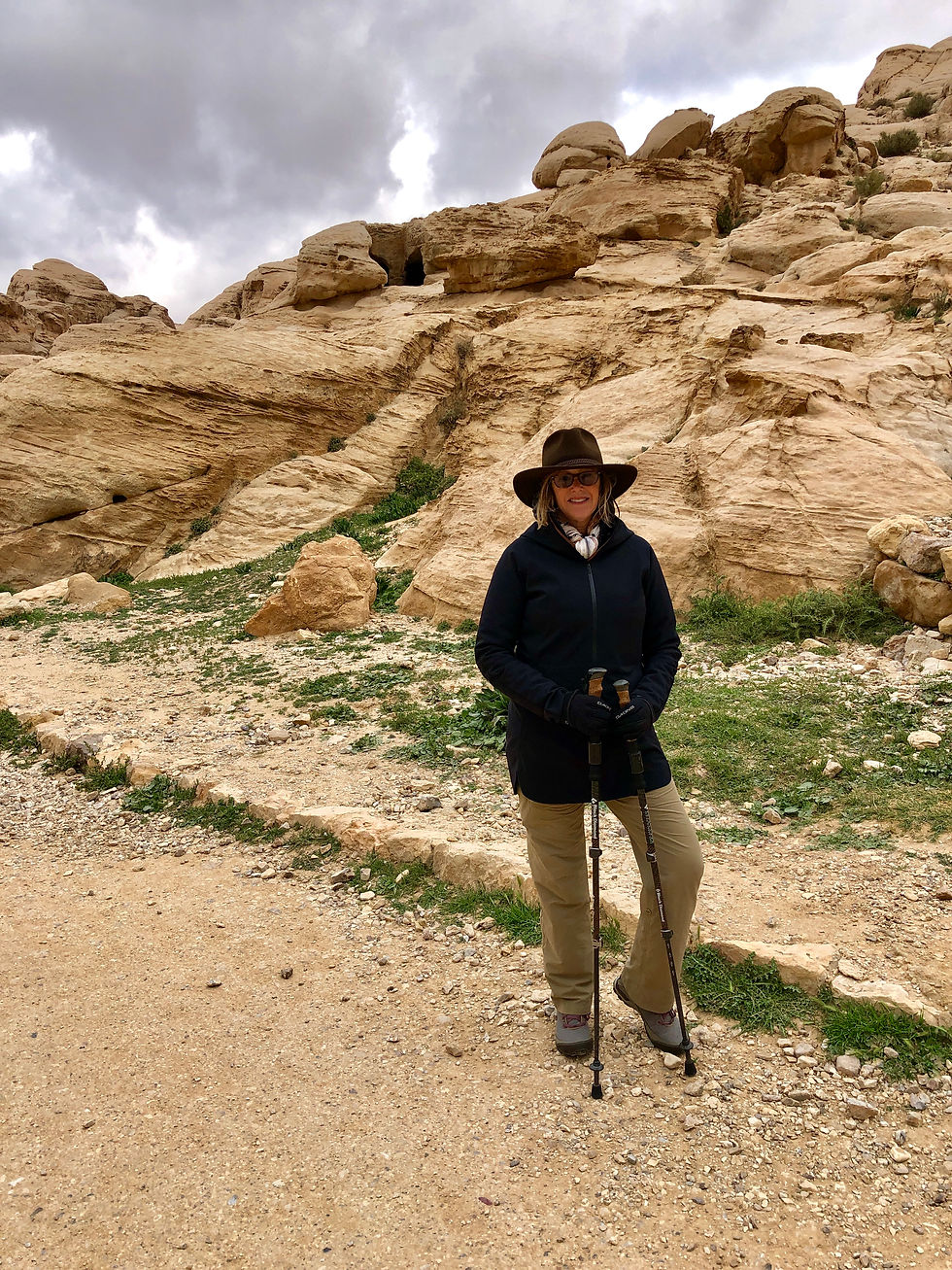



We then visited the historic Kerak Castle which was built in 1132 AD atop Mt. ‘Auf (1250m) and commands views of the Jordan Valley and the three wadis leading into it. The castle was built on the ruins of a lone Christian monastery that had fallen into ruin during the crusades. For centuries the castle played an important role in the region among tribal leaders, guarding the trade routes between Egypt and Damascus and to protect their region from the expansion of the Crusaders. It is still a hugely impressive building with commanding views over the surrounding hills and plains.




Driving to Petra, our next destination, we saw the shrine to Abraham’s brother Aaron, up on the highest mountain in Petra. It is where Aaron lost his life and the site the prophet Mohammed visited when he was ten years old. The Shrine is a pilgrimage site by Jews, Christians and Muslims, as Aaron is a prophet in all three religions.


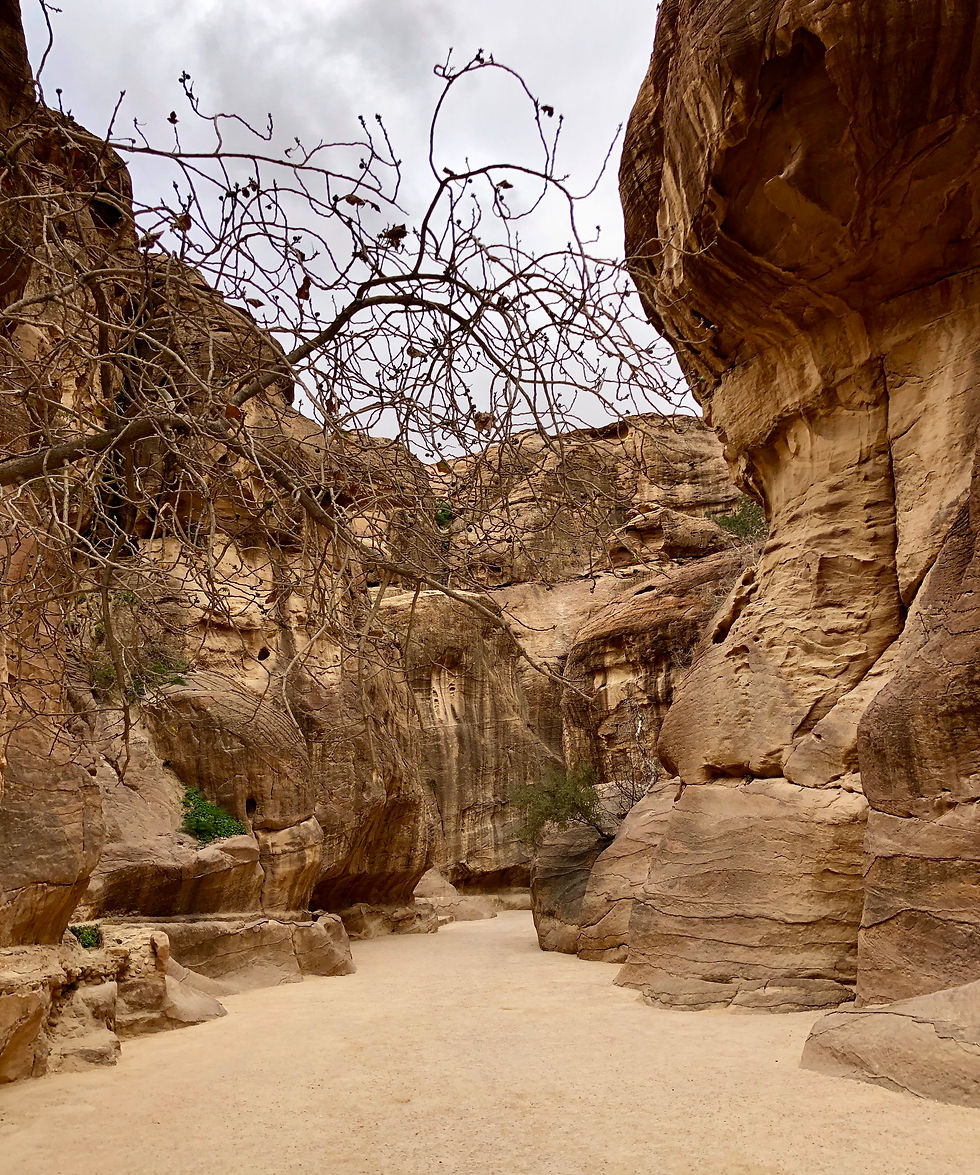
After we were settled into our hotel we were disappointed to learn that our Petra by Candlelight tour had been cancelled due to bad weather.


The next morning it was still windy and cold, but the rain looked like it would hold off. Our guide herded us out of the door and down the street to the entrance of Petra. Along the way, we lost the older ladies in our group who had apparently decided to stop for some shopping in the tourist traps. I could tell that our guide was a little frustrated. He sent us through the entrance with no instructions, other than “go, go.” Ol and I were the last ones through the gate.




We were inside the famous Nabatean site of Petra. The ancient capital of the Nabatean commercial empire until the Romans finally took over in 106 AD, Petra was largely forgotten, except by the local Bedouins, until it was 'discovered' in 1812 by a young Swiss explorer, Johann Ludwig Burckhardt.



Petra is situated on the edge of Wadi Aruba, whose canyon walls and surrounding hills make it almost impossible to approach except through a narrow, winding cleft in the rock, called the Siq. The city itself has very few free- standing buildings, as the Nabateans chose to carve their homes, buildings and tombs into the multi-colored sandstone cliffs.




Nowadays, the Jordanian government and the local people are aware of Petra's interest to tourists, and the tourism infrastructure in the adjoining village of Wadi Musa is booming. But, once entering through the Siq, the site is protected, and all of the modern world feels miles away. We had almost an entire day to tour this fascinating city.




We were supposed to have a two or three hour guided tour, then free time to explore this magical site. We started by walking through the Siq, which rises to 200 meters above us, and narrows to just 2 meters wide in certain places. The ancient Nabatean water channel can still be seen on one wall, as well as some remnants of the terra-cotta pipes that brought water into the city. Suddenly, a now classic view appeared around one corner, and one of Petra's most impressive monuments, the Khazneh (Treasury) came into view. We were lucky the sun came out for a brief minute so Ol could catch a few great photos.




Ol and I had not seen anyone from our group since we entered the gate. I know we were slow walking through, because Ol kept stopping to take pictures. We were being asked by locals if we wanted a private tour or a ride on a camel or donkey. After fifteen minutes I thought that I spotted our young New York friends climbing up to an overview. I knew we only had a few hours and I wanted to explore. I didn’t know what to do. Just when I was about to give up, we were joined by the professor and his wife. They too, were confused as to where to go and upset that we had not been given any information. We didn’t know where to meet our guide or the exact time we were supposed to leave.
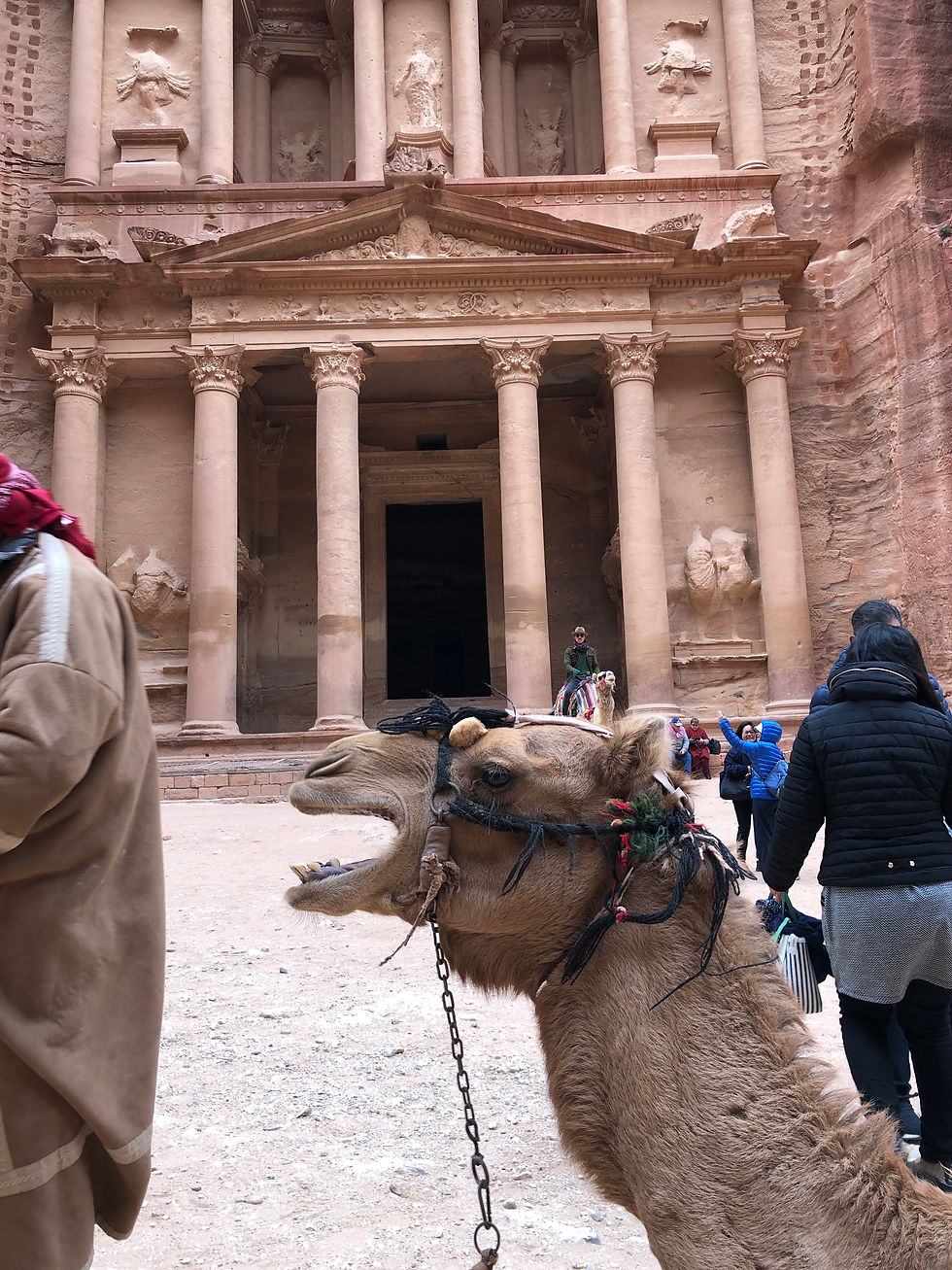



Maybe we weren’t good at this organized tour stuff after all. At that point we decided to go rogue. We hired an “Unofficial” Bedouin guide to take us up the mountain. We gave the New Yorkers his local cell number, so that he could call our guide to tell him where we were. We walked up a steep and narrow winding gorge past beautifully colored sandstone cliff walls.

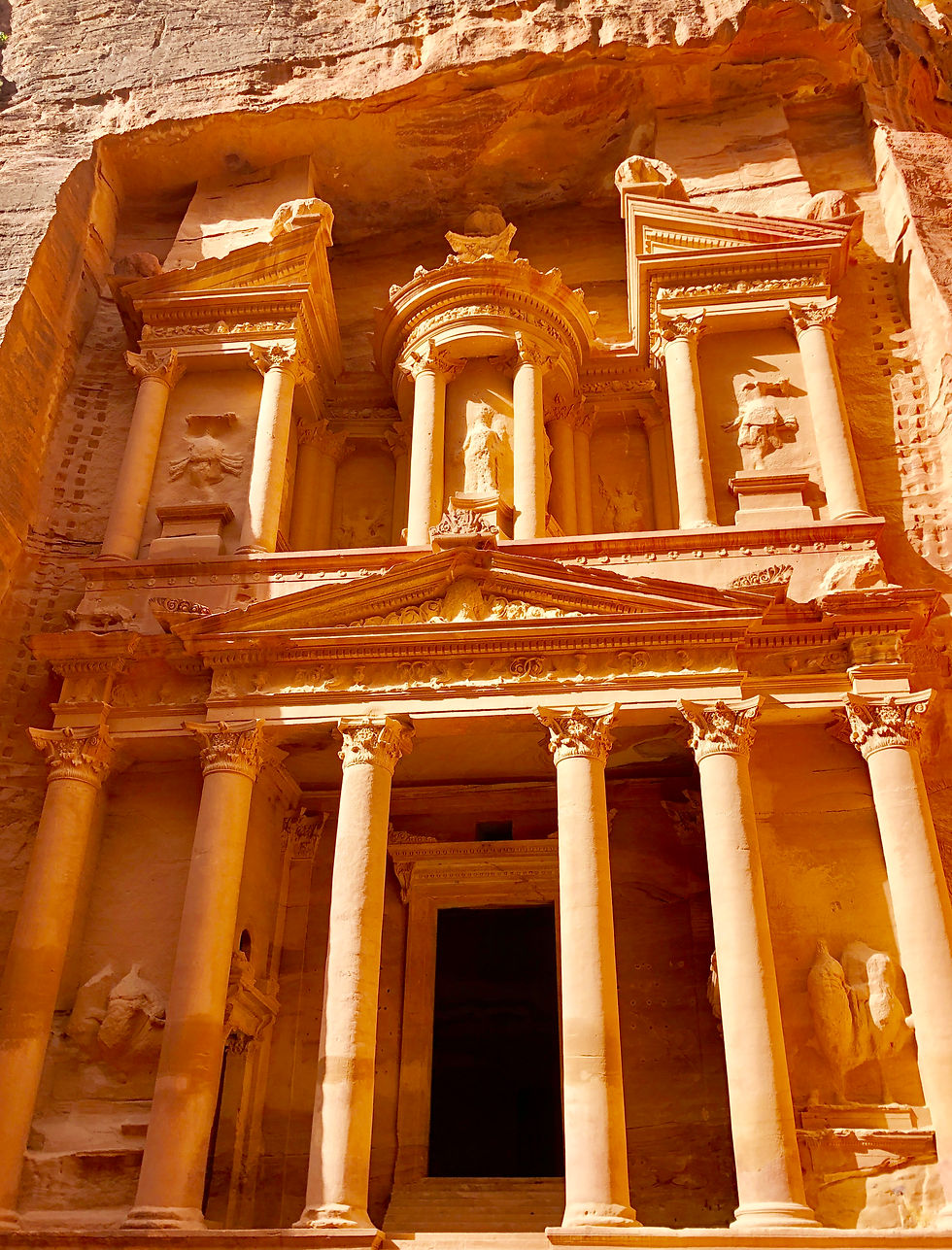


I don’t think I would have made it, had our guide not pulled me up in places. It was a lot of scrambling, but when we got to the top the view was worth it. We were high above the Treasury building, looking down on tourists who looked like insects.


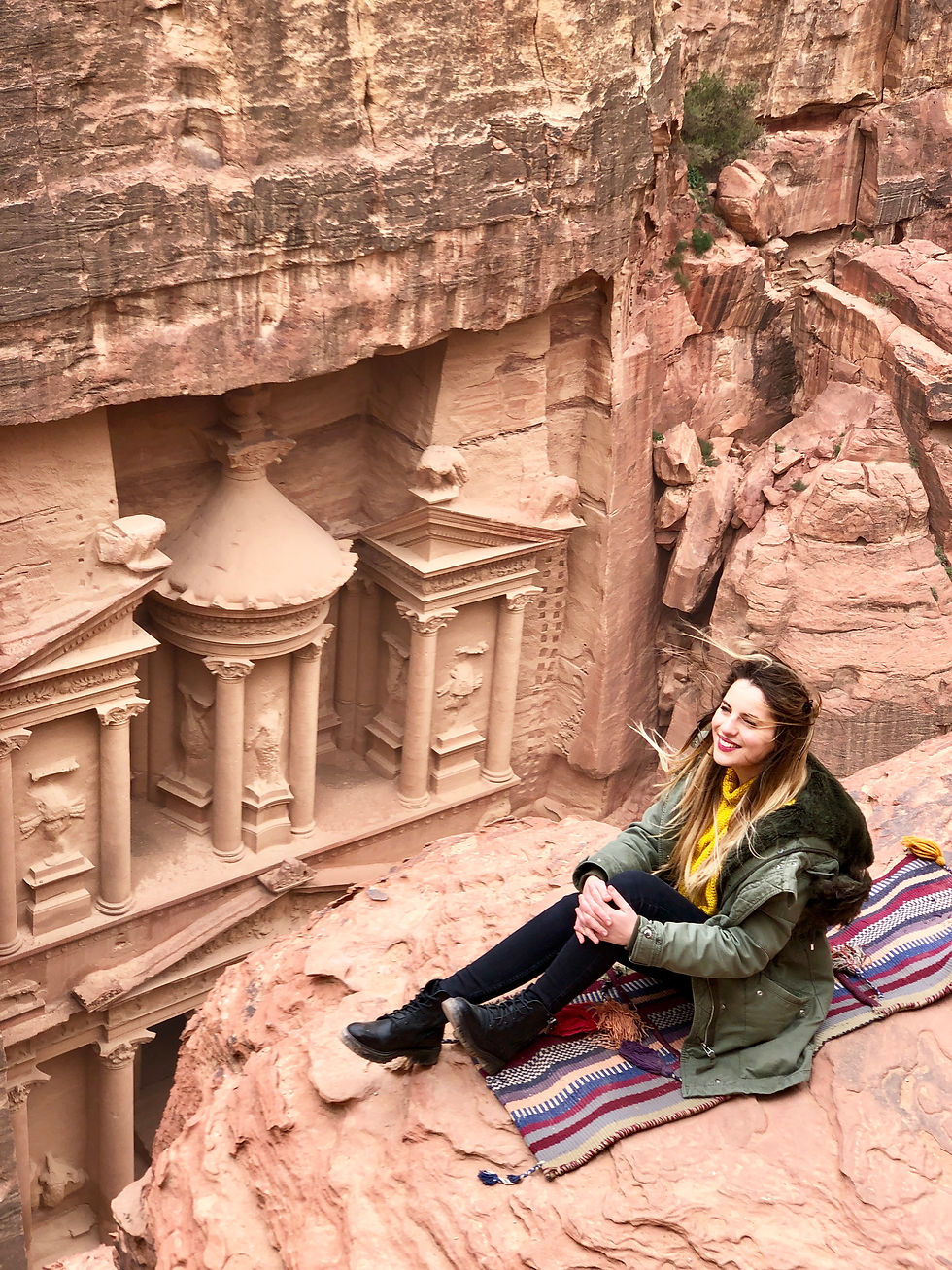

Our Bedouin guide explained how this, and the other buildings here were mainly elaborate facades carved into the rock from the top down. He described the spiritual significance of the building style.




He explained that he would take us on an ancient Bedouin route not available to most tourists. Along the way he pointed out the tombs carved into the rocks on both sides.




We couild see the entire valley and he explained that he and his family still lives in a cave across the valley. He pointed out where his father and mother lived and where he lives with both of his wives. Though he was only 28, he was married very young and is now expecting his ninth child.


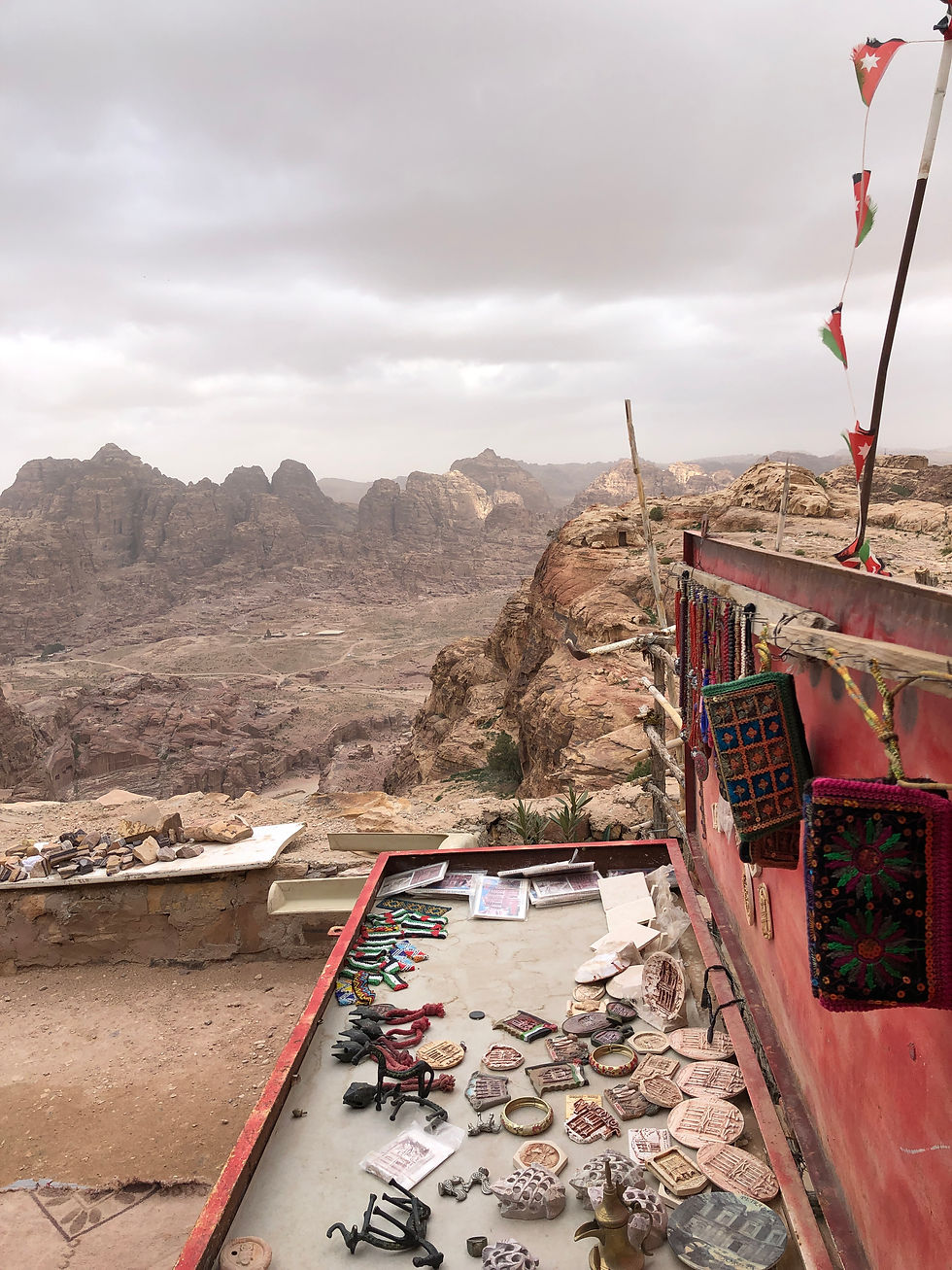

Along the way, we are offered tea and met several of his friends. His friends explained that our guide is a rock star among the Bedouin community. He is the best guitar player around. Oliver asked several of his friends to sit for portraits and then we were off again. We spent the next hour getting quite the work out. I kept asking myself why did we do this? But then I looked around and realized that we were getting to see Petra from a different angle, one that few visitors get to experience.





From the cliffs we saw the ruined Roman amphitheater, a colonnaded street, and the huge and imposing 'Monastery'. The biggest of Petra's carved monuments at 50 meters high and 45 meters wide. We had a truly spectacular view west across Wadi Aruba and the Jordan Valley.




He soon took us down the mountain path and we visited more buildings. We were still group-less and it was getting close to when we should probably leave. We made our way back to the Treasury building where we began our tour.




Ol and I headed back to the town the same way we walked in. A block from our hotel, we ran into members of our group who said that we were leaving at 2:00 p.m. Relieved to see one another we got lunch and headed back to the hotel.
We then heard the story about the ladies who got lost in the morning. They had stopped for a moment and when they looked up our group was gone, so they went back to the hotel.
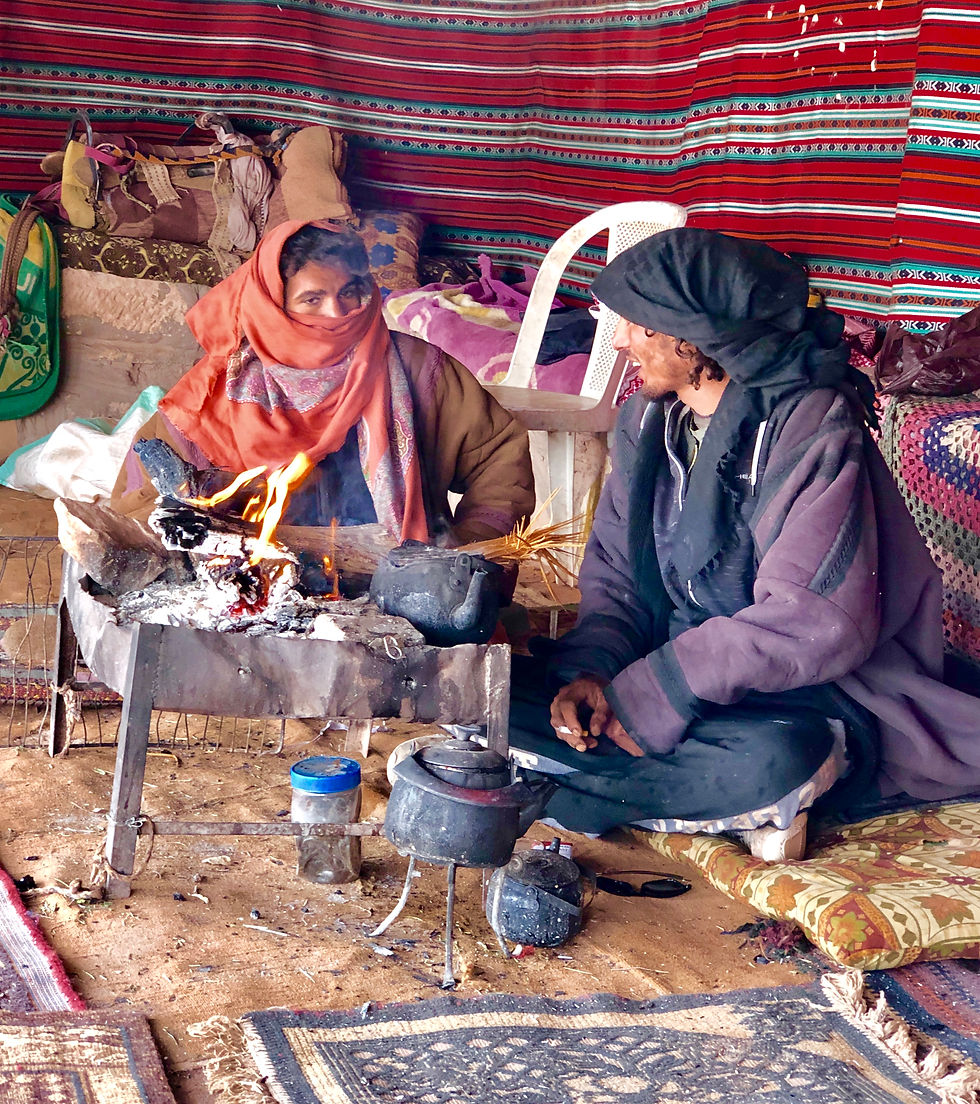



We also heard that our hike was “technically” illegal. The Bedouin are not legal guides and hiking is not permitted as a French tourist lost her life a few months ago doing the same thing we did. If it had rained, the trails that we were on would have turned treacherous.




Ol and I apologize for getting lost and going on our own adventure and promised to stick with the group. However, we both knew that we got a real glimpse into Bedouin life and made a new friend in the process. For us, meeting the locals and experiencing the culture is what travel is all about.




It was magical getting lost in Petra.




Comments